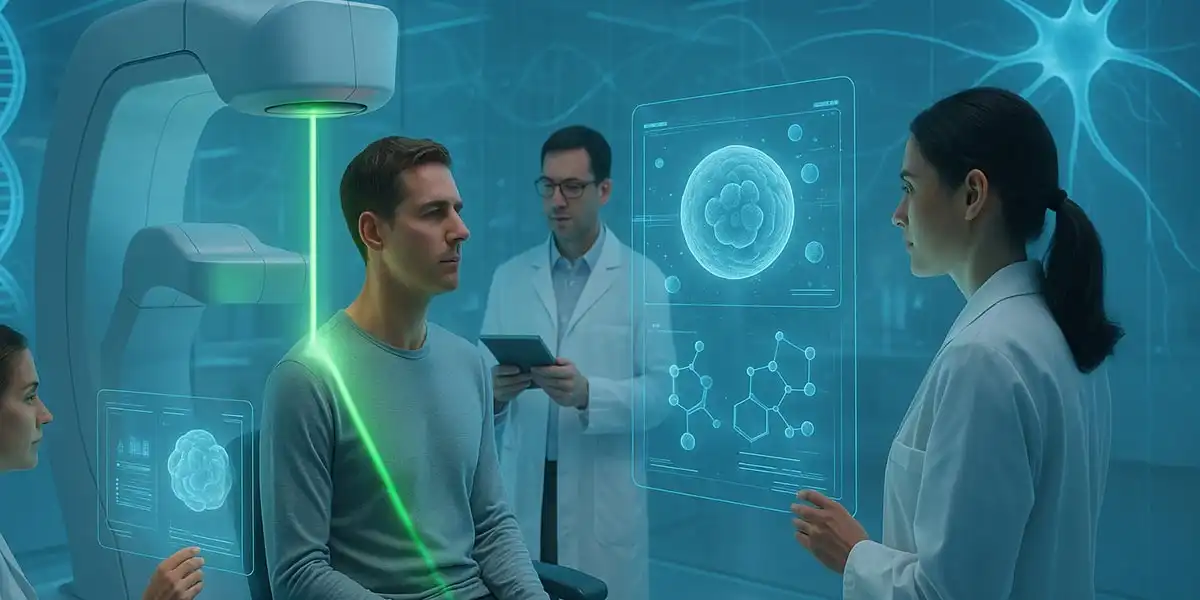
Jul 21, 2025
In a world where precision, speed, and safety are essential in medicine and biology, a science called biophotonics is quietly revolutionizing how we diagnose, treat, and understand disease. Simply put, biophotonics is the study of how light interacts with living organisms, and it’s rapidly becoming one of the most promising technologies of the 21st century.
From helping surgeons see with greater clarity during operations to enabling early cancer detection through noninvasive methods, biophotonics is enhancing the way healthcare is delivered. And the world is noticing that investment in this sector is growing rapidly.
The global biophotonics market is on a sharp upward trajectory. In 2024, it was valued at $62.6 billion. By 2025, it's expected to reach $68.4 billion, and by the end of 2030, it is projected to climb to an impressive $113.1 billion. This growth reflects a compound annual growth rate (CAGR) of 10.6% from 2025 to 2030.
This surge is driven by a combination of factors: a rising demand for minimally invasive medical

This surge is driven by a combination of factors: a rising demand for minimally invasive medical tools, growing awareness of early disease detection, ongoing innovation in optics and photonics, and the push toward precision medicine globally.
Biophotonics has applications across various fields, but its most significant impact is healthcare.
Light-based imaging technologies, such as optical coherence tomography (OCT), fluorescence imaging, and confocal microscopy, allow doctors and researchers to examine cellular and molecular tissues without surgery.
Biophotonics helps detect diseases like cancer, cardiovascular conditions, and infections early, sometimes even before symptoms appear. Devices powered by biophotonics can detect subtle changes in cells or tissue based on how they reflect or absorb light.
Techniques like photodynamic therapy use light-sensitive drugs that activate when exposed to specific wavelengths of light, killing cancer cells while leaving healthy cells unharmed.
Biophotonic sensors are now being integrated into wearable technologies to monitor vital signs, glucose levels, and more, paving the way for real-time health tracking and preventive care.
The global market for biophotonics was valued at $62.6 billion in 2024. It’s expected to grow from $68.4 billion in 2025 to reach $113.1 billion by the end of 2030, at a compound annual growth rate (CAGR) of 10.6% from 2025 to 2030.
A variety of cutting-edge technologies powers the biophotonics market:
Together, these tools improve accuracy, reduce recovery times, and make procedures less painful for patients.
Several global companies are leading innovation in the biophotonics space:
These companies invest heavily in R&D, pushing the boundaries of what’s possible in research labs and clinical settings.
As the world moves toward more personalized, data-driven healthcare, biophotonics will be crucial in shaping that future. Integrating AI, machine learning, and data analytics with biophotonic systems opens up new possibilities—from predicting disease progression to automating diagnostics.
Moreover, with the expansion of portable diagnostic devices and wearable biosensors, biophotonics is no longer confined to hospitals and labs. It’s coming into homes, helping people monitor their health and make proactive decisions.
Biophotonics is more than a scientific breakthrough—it bridges light and life. Its ability to illuminate the unseen, enhance diagnosis, and guide treatment is key to transforming healthcare as we know it.
As the market continues to grow, driven by technological innovation and rising global demand, biophotonics stands out as a field with commercial potential and the power to improve millions of lives.
Consider becoming a member of the BCC Research Library and gain access to our full catalog of market research reports in your industry. Not seeing what you are looking for? We offer custom solutions too, including our new product line: Custom Intelligence Services.
Contact us today to find out more.

Sandeep is a Senior Executive in Marketing Operations at BCC Research, proficiently serving as a graphic designer and content creative specialist. His expertise extends to AutoCAD and Revit, and he has made valuable contributions to the event industry with his design skills.

We are your trusted research partner, providing actionable insights and custom consulting across life sciences, advanced materials, and technology. Allow BCC Research to nurture your smartest business decisions today, tomorrow, and beyond.
Contact UsBCC Research provides objective, unbiased measurement and assessment of market opportunities with detailed market research reports. Our experienced industry analysts assess growth opportunities, market sizing, technologies, applications, supply chains and companies with the singular goal of helping you make informed business decisions, free of noise and hype.